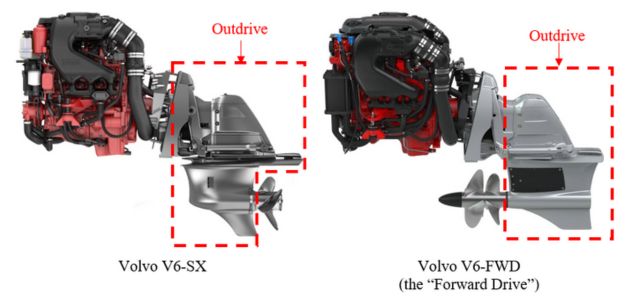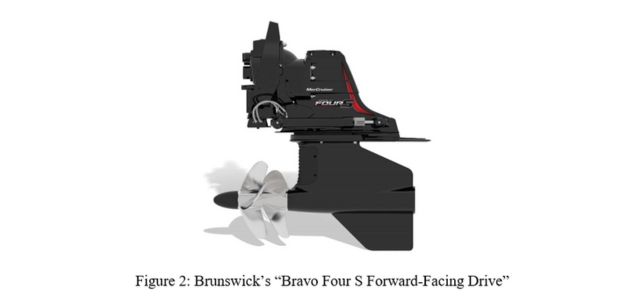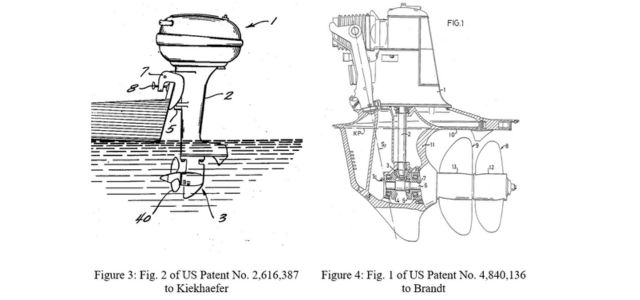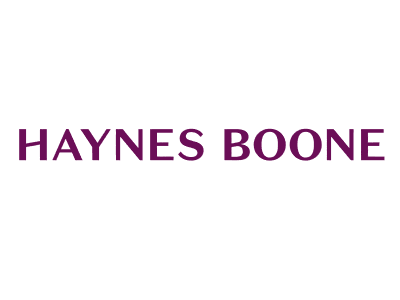In Volvo Penta v. Brunswick (2022-1765), evidence of copying overcame the showing that all claim limitations were obvious in light of the prior art.
The goal for petitioners in an inter partes review is pretty straightforward: find prior art that teaches all of the claim elements and show that a POSITA would have been motivated to combine them. To that end, the petitioner argues that the prior art discloses the claimed features and the patent owner argues that it doesn’t. Then, the Patent Trial and Appeal Board weighs the evidence and makes a determination.
However, one case recently remanded by the Federal Circuit’s precedential decision, Volvo Penta of the Americas, LLC v. Brunswick Corporation, flipped all of that on its head.
In 2015, the patent owner, Volvo Penta, developed and patented the “Forward Drive.” The Forward Drive is a configuration for a sterndrive boat motor that moves the propeller from behind the outdrive to the front of the outdrive, as shown below.

The Forward Drive setup improves performance generally and increases safety by moving the propeller away from swimmers or surfers behind the boat.
The Forward Drive was so successful that many boat manufacturers began using Volvo Penta’s Forward Drive in their own boats and “urg[ed] Brunswick to bring a forward drive to the market.” Volvo Penta of the Americas, LLC, v. Brunswick Corporation, 2022-1765 * 13 (Aug. 24, 2023). In response, Brunswick developed the “Bravo Four S Forward-Facing Drive,” shown below, with the propeller positioned in front of the outdrive.

“The same day that Brunswick launched the Bravo Four S, it petitioned for inter partes review of all claims of” Volvo Penta’s Forward Drive patent. Id. at 4.
In its petition, Brunswick presented a combination of the forward-facing propellers of Kiekhaefer’s outboard motor patented in 1952 and Brandt’s sterndrive motor patented in 1989.

“Volvo Penta did not assert that the references in combination failed to disclose all the claim elements.” Id. Instead, they only argued that (1) there was no motivation to combine the references, and (2) objective indicia of nonobviousness overcame any prima facie case of obviousness.
The PTAB rejected both of Volvo Penta’s arguments. But, on appeal, the Federal Circuit held that “the Board failed to properly consider” Volvo Penta’s second argument regarding “the evidence of objective indicia of nonobviousness.” Id. at 20.
To show that objective indicia of nonobviousness overcome a prima facie case of obviousness, a patent owner must show (1) a nexus between the merits of the claimed invention and the objective evidence, and (2) objective indicia of nonobviousness, which can include commercial success, copying, industry praise, skepticism, long-felt but unresolved need, and failure of others. In this case, Volvo Penta dropped the ball on nexus, providing a “single, conclusory sentence…to show a presumption of nexus.” Id. at 12. But, the Federal Circuit placed significant weight on the evidence of Brunswick’s copying the Forward Drive both to show a nexus and objective indicia of nonobviousness.
The result, then, was remarkable. Brunswick was in an ideal position, with prior art references that both parties agreed taught each claim element. Yet, Brunswick’s clear copying of the patent and filing an IPR to avoid licensing was enough to outweigh its slam-dunk obviousness analysis.
The Volvo Penta decision is undoubtedly a massive win for patent owners generally and will motivate them to search high and low for any and all evidence of copying by IPR petitioners. But only time will tell what level of detail will be required for that evidence to secure a similar result.

Written by Eugene Goryunov
Partner, Haynes and Boone, LLP

Written by Adam Erickson
Associate, Haynes and Boone, LLP
You may also like…
Welcome to Hangzhou! The AIPPI World Congress 2024
AIPPI World Congress 2024 opened its doors in Hangzhou, China, on Saturday, 19 October. All attending were warmly...
Crystalizing plant variety infringement protection in India
On September 20, 2024, the Delhi High Court ruled in Pioneer Overseas Corporation v. M/s Evercrop Agro Science &...
German criminal court finds three defendants guilty of fraud for sending misleading invoices to EUIPO customers
In September 2024, the Munich Court (Germany) found three defendants guilty of commercial gang fraud for sending...
Contact us to write for out Newsletter














